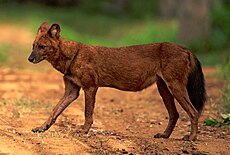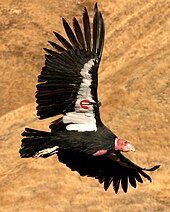
Back Bedreigde spesie AF Gefährdete Arten ALS Especie en periglo d'extinción AN أنواع مهددة بالانقراض Arabic أنواع مهددة بالانقراض ARZ বিপন্ন প্ৰজাতি AS Especie en peligru d'estinción AST Nəsli kəsilməkdə olan növlər AZ نسلی کسیلمکده اولان نؤوعلر AZB Юҡҡа сығып барыусы төрҙәр BA
| Conservation status |
|---|
 |
| Extinct |
| Threatened |
| Lower Risk |
| Other categories |
| Related topics |
 Comparison of Red List classes above and NatureServe status below  |



An endangered species is a species that is very likely to become extinct in the near future, either worldwide or in a particular political jurisdiction. Endangered species may be at risk due to factors such as habitat loss, poaching, invasive species, and climate change.[1] The International Union for Conservation of Nature (IUCN) Red List lists the global conservation status of many species, and various other agencies assess the status of species within particular areas. Many nations have laws that protect conservation-reliant species which, for example, forbid hunting, restrict land development, or create protected areas. Some endangered species are the target of extensive conservation efforts such as captive breeding and habitat restoration.
Human activity is a significant cause in causing some species to become endangered.[2][3][4][5]
- ^ "Why do animals and plants become endangered? | U.S. Geological Survey". www.usgs.gov. Retrieved 14 January 2024.
- ^ "Giant Panda WWF". Archived from the original on 9 August 2012. Retrieved 19 September 2022.
- ^ "Grey Long-Eared Bat Mammal Society". Retrieved 19 September 2022.
- ^ "Endangered Species". education.nationalgeographic.org. National Geographic. Retrieved 27 September 2023.
- ^ Tollefson, Jeff (6 May 2019). "Humans are driving one million species to extinction". Nature. 569 (7755): 171. Bibcode:2019Natur.569..171T. doi:10.1038/d41586-019-01448-4. PMID 31065101. S2CID 256768064.